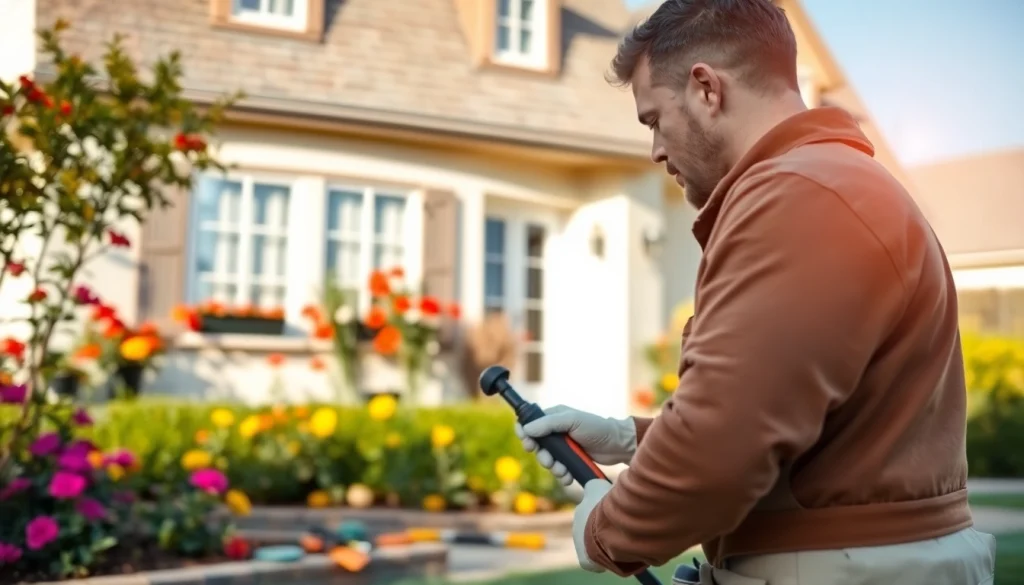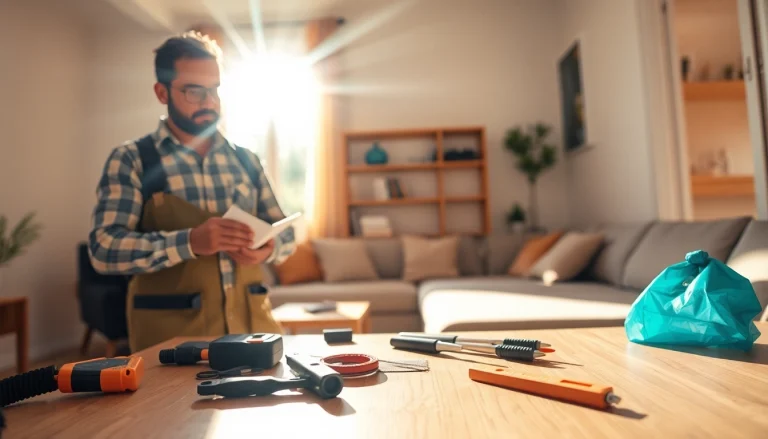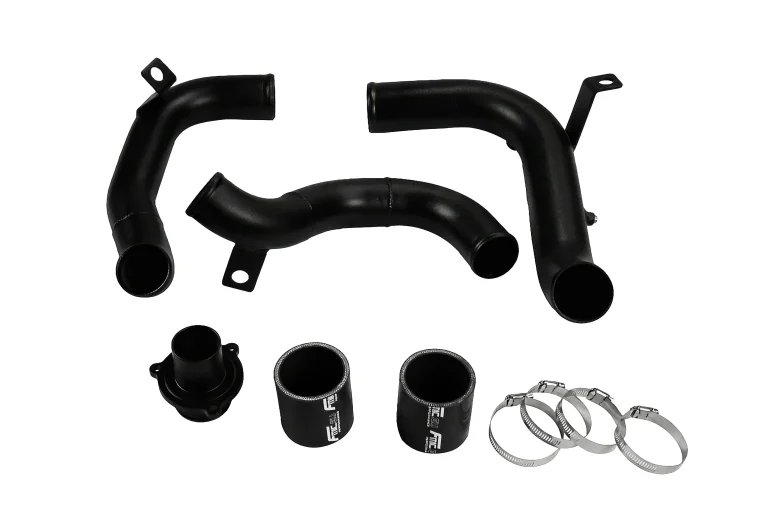
Understanding Pest Control Basics
Pest control is an integral part of maintaining a healthy and safe environment in both residential and commercial settings. With a diverse range of pests threatening our spaces, understanding the basics of pest control is the first step in safeguarding our home or business. From termites that can compromise the structural integrity of our houses to rodents that can introduce diseases, effective pest management is vital. Thus, utilizing pest control professionals can lead to significant benefits if the need arises.
What is Pest Control?
Pest control is defined as the regulation or management of various species that are considered pests. These can include insects, rodents, fungi, and sometimes plants that negatively impact human activities. The overall goal is to prevent these pests from causing harm to people, property, or the environment. The methods of pest control can range from physical barriers and traps to chemical treatments designed to exterminate or repel harmful species.
The Importance of Effective Pest Management
Effective pest management ensures not only the protection of physical property but also the health and safety of inhabitants. Pests can cause various issues, from structural damage – like that caused by termites – to health risks associated with insect bites or rodent droppings. Beyond immediate damage, certain pests can also contribute to long-term health issues, including allergies and respiratory conditions from airborne pollutants such as rodent allergens or mold associated with pest droppings.
An effective pest management strategy is crucial for several reasons:
- Health Protection: Pest control helps mitigate the risks associated with pests that can harbor diseases.
- Property Preservation: Regular pest management protects your home or business from structural damage caused by pests.
- Financial Savings: By preventing infestations early, financial implications due to property damage and potential health issues can be significantly reduced.
Common Types of Pests and Their Impacts
Various pests can invade homes and businesses, each bringing unique challenges and potential harm. Understanding these pests is vital for effective management:
- Termites: Known as “silent destroyers”, termites can consume wood, including the structural parts of your home.
- Rodents: Rats and mice can cause damage to property and pose health risks through the spread of diseases.
- Bed Bugs: These nuisances can result in sleepless nights and skin irritations due to bites.
- Ants: While some species are harmless, others, like fire ants, can inflict painful bites.
- Spiders: While many are harmless, some can pose health risks through bites.
- Termite: Can compromise the property and require expensive solutions.
Pest Control Methods and Techniques
When dealing with pest control, homeowners and businesses have various methods and techniques at their disposal. Selecting the right approaches is essential for optimizing effectiveness while minimizing harm to the environment.
Chemical vs. Organic Pest Control Solutions
Pest control methods typically fall into two broad categories: chemical solutions and organic (or natural) solutions. Understanding the differences between these categories can help homeowners make informed decisions.
Chemical Solutions
Chemical pest control solutions often involve the use of synthetic pesticides designed to eradicate or repel pests effectively. Although they provide immediate results, long-term usage can lead to environmental concerns, resistance in pest populations, and health risks for humans and pets.
Organic Solutions
Organic pest control methods use naturally derived substances to manage pests. Examples include neem oil, diatomaceous earth, or essential oils. Organic solutions are generally safer for the environment and human health but may take longer to show results than their chemical counterparts.
Integrated Pest Management Approaches
Integrated Pest Management (IPM) is a holistic approach that combines various strategies to manage pests effectively. This method emphasizes understanding the pest’s lifecycle and behaviors, allowing for more sustainable and long-term solutions. The key components of IPM include:
- Monitoring: Regular inspections and monitoring to identify pest populations and their impacts.
- Prevention: Implementing practices that reduce pest access to food, water, and shelter.
- Control: Using a combination of methods, such as traps, barriers, and both chemical and organic treatments.
Choosing the Right Method for Your Needs
Selecting the right pest control method depends on several factors, including the type of pest, the severity of the infestation, and individual preferences regarding environmental safety. Homeowners should consider the following before making a decision:
- Evaluate the level of infestation: A minor cockroach sighting may not require the same level of urgency as a full-blown termite infestation.
- Assess potential risks: Understanding potential health risks associated with pest treatments can help in selecting safer methods.
- Consider long-term effectiveness: While immediate solutions may seem appealing, consider the broader implications of pest treatments.
DIY Pest Control Tips for Homeowners
For many homeowners, addressing pest issues directly is preferred. There are several effective DIY tips that can help manage pests before they become significant problems:
Essential Tools and Supplies
Homeowners can maintain an arsenal of tools and supplies to effectively manage minor pest problems. Key items include:
- Insect Traps: Sticky traps and pheromone traps can help monitor and manage insect populations.
- Pesticides: Appropriate insecticides should be part of a homeowner’s toolkit, but always read labels and follow safety instructions.
- Sealing Materials: Caulk and foam products can eliminate points of entry for rodents and insects.
- Protective Gear: Gloves, masks, and goggles should be included for safe application of pest control products.
Preventative Measures to Avoid Infestations
Preventing pest infestations is more effective than managing them post-infestation. Here are several preventative measures that homeowners can adopt:
- Regular Cleaning: Keeping living areas clean can remove potential food sources for pests.
- Proper Food Storage: Use airtight containers to keep food inaccessible to pests.
- Seal Cracks and Crevices: Regularly inspect and seal areas where pests can enter the home.
- Lawn Maintenance: Keeping yards tidy and free of standing water eliminates breeding sites for pests.
When to Call a Professional Pest Control Service
There are scenarios when DIY solutions are insufficient. Homeowners should consider calling a professional pest control service in the following instances:
- The infestation is beyond control, such as large-scale termite damage or rodent issues.
- Health risks from pest-related diseases are present.
- Homeowners lack the time or expertise to manage pest control effectively.
- The pests are likely to cause significant damage or require specialized knowledge for eradication.
Understanding the Costs of Pest Control
When dealing with pest control, it’s essential to understand the associated costs to plan mortgage or budgets effectively. Costs can vary widely based on several factors:
Factors Influencing Pest Control Pricing
Several elements can impact the pricing of pest control services, including:
- Type of Pest: The nature of the pest primarily determines the control method required and thus affects pricing.
- Infestation Size: More extensive infestations might require more resources and time, increasing costs.
- Location: Regional pricing variations can affect overall costs; metropolitan areas may see higher service charges.
- Type of Treatment: Advanced treatments may involve higher materials and labor costs.
Comparing DIY Solutions to Professional Services
While DIY pest control may appear cost-effective, it’s crucial to evaluate potential long-term implications. Professionals often employ methods and tools that are more effective than standard consumer products used in DIY scenarios. Therefore, a cost-benefit analysis could reveal that professional services provide better value over time, particularly for reoccurring pest issues.
Analyzing the Long-Term Value of Pest Control
Investing in pest control can yield substantial long-term benefits. For instance, regular inspections prevent severe infestations and reduce potential damage costs. Additionally, maintaining a pest-free environment enhances the quality of life for occupants, promoting overall health. As a result, the long-term savings from prevented infestations often outweigh the initial expenditure.
Finding the Best Pest Control Services Near You
Choosing a reputable pest control provider is essential to ensure effective pest management. Here’s how to find the best services near you:
What to Look for in a Pest Control Provider
When searching for a pest control service, consider the following criteria:
- License and Certification: Ensure the company holds the necessary licenses for operation.
- Experience: Check how long the company has been in the industry and their reputation.
- Insurance: The provider should carry liability insurance to protect against potential damages.
- Service Offerings: Look for companies that provide a comprehensive range of services tailored to your needs.
Reading Reviews and Comparing Services
Reviews and testimonials can offer insight into the experiences of previous customers. Checking multiple sources, including online review platforms and social media, can provide a well-rounded perspective on the company’s reliability and effectiveness.
Creating a Customized Pest Control Plan
Every space is unique, which means pest control strategies should be tailored accordingly. A reputable pest control service should conduct an initial inspection to identify specific pest issues and recommend a customized plan that addresses unique needs. This bespoke approach ensures optimal effectiveness in pest management.






